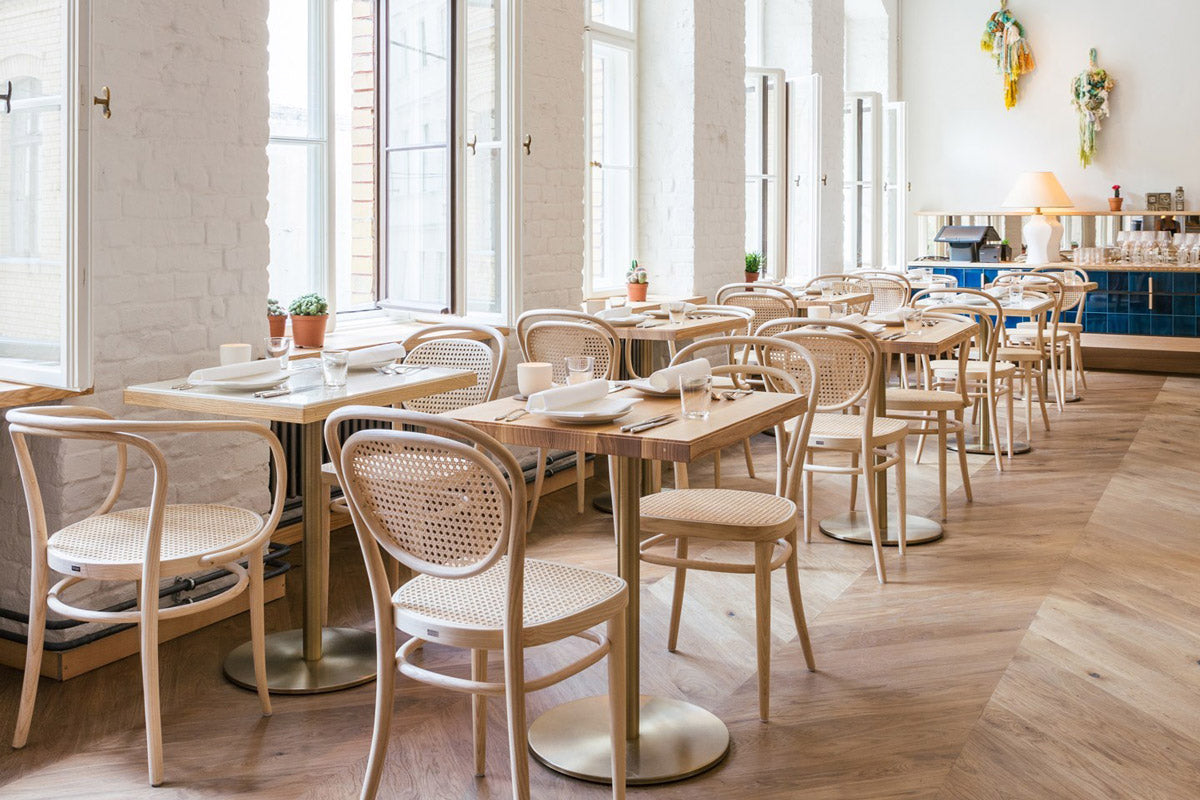It is likely that you have seen this chair in some café, in a house’s dining room, as a prop in a setting, or even in a museum. It is, without a doubt, one of the most famous chairs and an iconic design of which millions of pieces have been made, but in addition to its recognizable shape, what makes it such an important piece of furniture?
It is true that well-made objects do not need to have their creator’s name stamped on them, they get their value because people like using them, they are well manufactured, and they transcend from one generation to the next; Chair No. 14 undoubtedly has these qualities. As reference and to be clear about its historic context, let’s begin by talking about the man who created it, Michael Thonet.
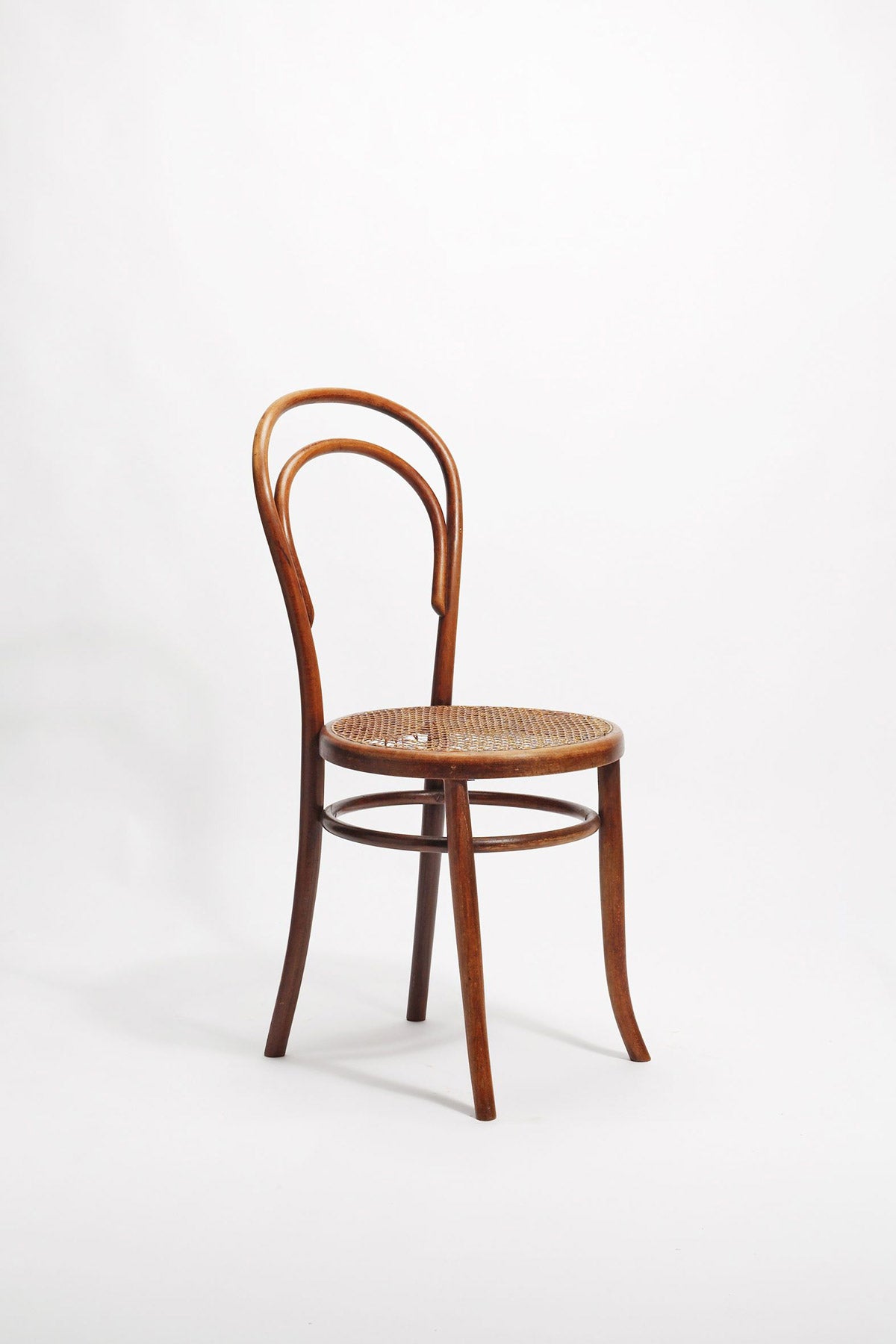
The Creator
Born in Germany in 1796, he started out as an apprentice in a carpentry shop. At the age of 26, he became independent and established his own workshop; in addition to creating traditional wooden objects, he experimented with curved wood veneers through the use of heat, moist, and glue.
In 1836, at 40, his Boppard chair, made of bent wood, became a success. Thanks to this, he acquired the glue factory one year later, from which he used to buy raw materials for his productions. It was during this good run that he tried to patent his contributions in several European countries, unsuccessfully. It is important to highlight that the bending wood technique already existed years earlier, but Thonet’s contribution was the creation of light, stylized pieces of furniture with organic shapes and excellent manufacture quality, all this based on the mastery and perfection of the bending wood technique.
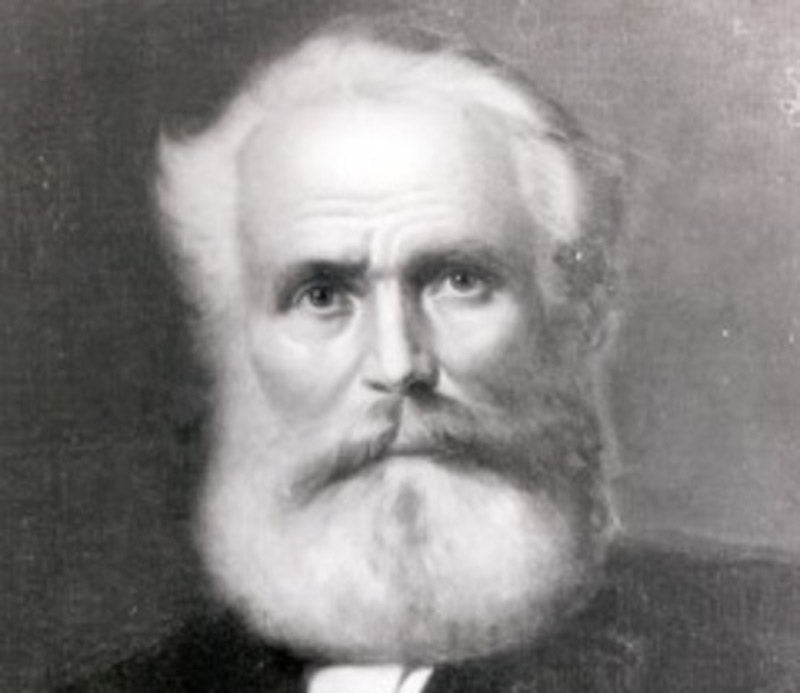
During his career as carpenter and businessman, his factory closed, reopened, and was passed on to his children with whom he constantly worked. Thonet continued creating new models of chairs and participated with some of them in exhibitions, earning some awards. He opened factories in other German cities. Thonet was a successful businessman (he sold millions of pieces of furniture) and left a great legacy upon his death, along with a company that still works today. Funnily, the most successful models made by the company did not employ glue in any stage of the process.
Within the great amount of chairs created by him, Chair No. 14 stands out, also known as Café Chair No. 14, and even the “chair of chairs”, introduced in 1859, when its creator was 63 years old. An example of the mastery of this process and its materials.
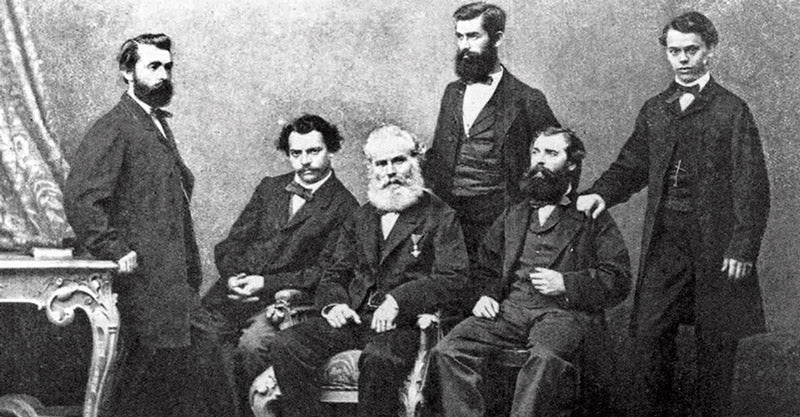
The contributions
No. 14 is not only beautiful, comfortable, and resistant. Its success was due mainly to its technical features. The basic version was made of only six pieces, it could be easily assembled and disassembled; it could be bought in parts with an instruction manual to put it together. 36 chairs could be contained in a 1 square meter space for packaging, storing, and transport purposes. In commercial and industrial terms, these features turned it into a legendary product.
This item was exported to other countries and conquered cafés in many cities. It is said that one time, the chair was dropped from the Eiffel Tower’s terrace and resisted the impact. As a matter of personalization, the chair was conceived with certain interchangeable pieces, which created variations of the original model. Thonet made a beautiful product created to be manufactured in great quantities and which, as if it were not enough, used great marketing and diffusion methods so it became known everywhere, through catalogs and posters.
The six pieces that make up the basic model are:
- -1 backrest, which also works as the chair’s back legs
-1 support to complement the backrest
-2 front legs
-1 seat made by a wooden frame and weaved raffia
-1 support for the legs, putting together all the elements with few nuts and bolts.
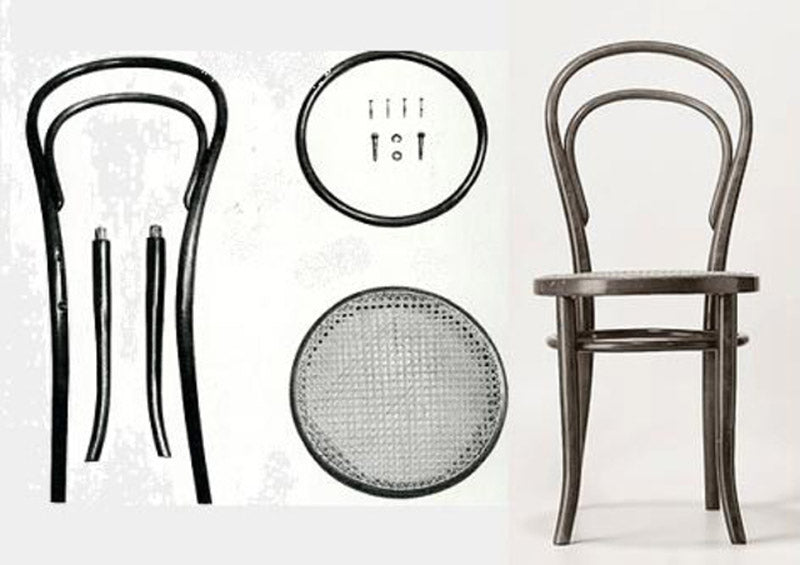
If we go deeper into its formal and constructive features, we find materials used in their minimal expression, little waste, stylized shapes, and a very defined and recognizable typology, which have helped it stay current during most of the trends preceded by it.
It is still being produced today and, even though its highest commercial point was the first half of the 20th century, it continued selling considerably. The decrease in sales matches exactly with the emergence of the Bauhaus style, where even though the formal language kept certain affinity with the chair, the metal pipe was preferred during this time period, which could also be bent and shaped into light objects with great resistance.
The bending wood process can only be made with human strength, due to the material’s hardness and flexibility. Up to now, only human touch can bend the material with the accurate strength and speed so it does not break.
The legacy
This iconic chair became the favorite of many personalities. Einstein appears photographed next to one of them in one of his memorable pictures. In the painting Au Moulin Rouge, by Toulouse-Lautrec, two of these pieces are part of the setting. Picasso dedicates a series of sketches to one of its successors, the Thonet rocking chair. The cubist painter is portrayed in his studio on many occasions on his rocking chair. One of Le Corbousier’s favorite chairs was Thonet No. 209 (designed by his children), which along with No. 14 he used in many of his works and was given many praises.

After Michael Thonet’s death, the company continued, managed by his children, and it became one of the great furniture producers still working today. It is still producing and marketing its classic models, along with new ones, which were created later. During the Bauhaus days, Marcel Breuer designed model No. S 32/S 64 and Mies Van der Rohe, Chair S 533, both for the Thonet company.
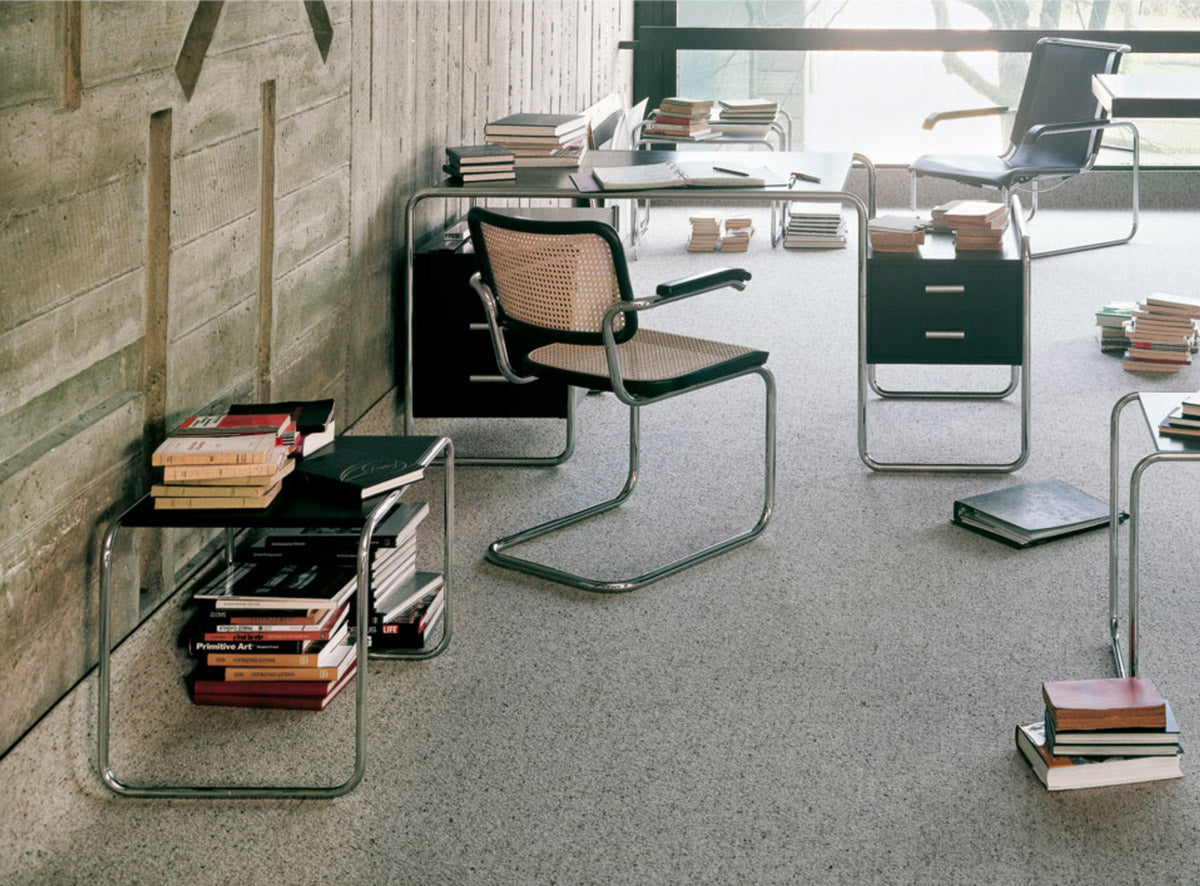
In 2009, designer James Irvine redesigned the “chair of chairs” for a collaboration between Muji + Thonet.
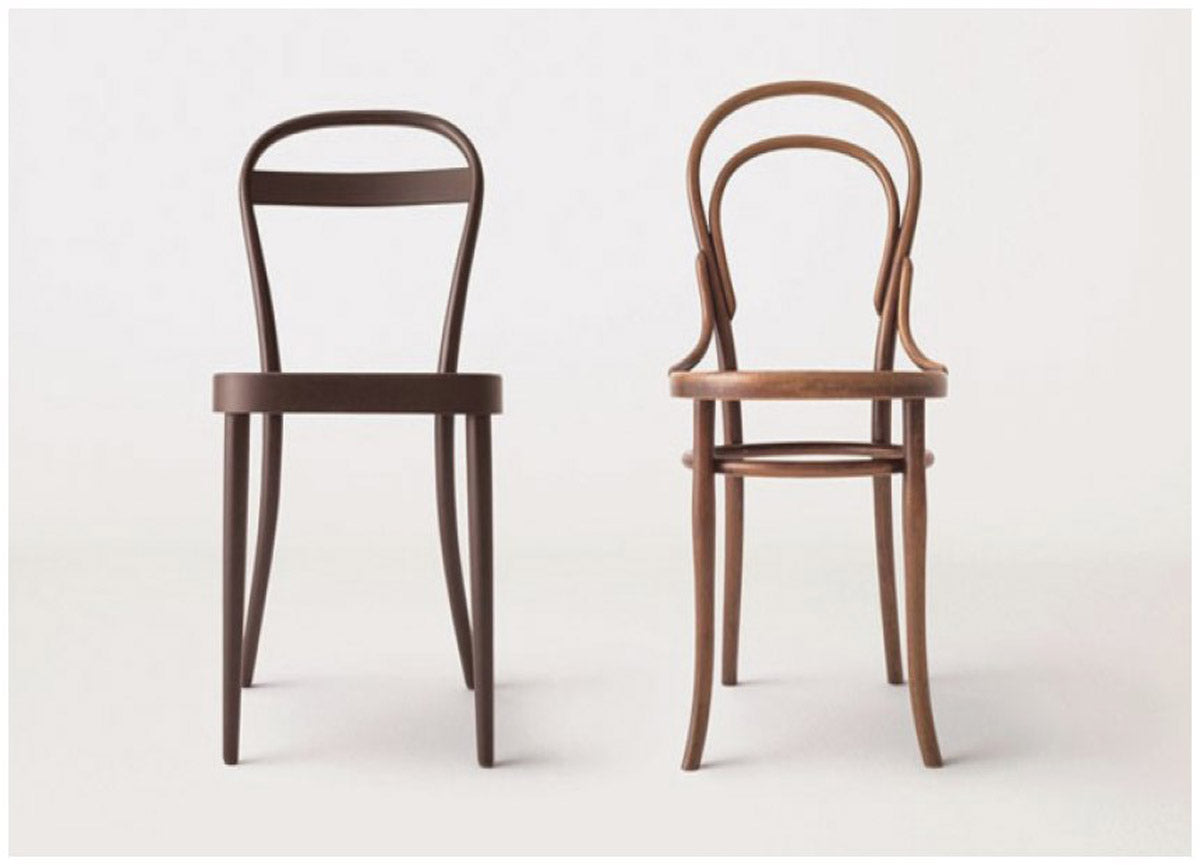 Today, Chair No. 14 is still being marketed by the Thonet brand under the name of an evolved model, Chair No. 214.
Today, Chair No. 14 is still being marketed by the Thonet brand under the name of an evolved model, Chair No. 214.

